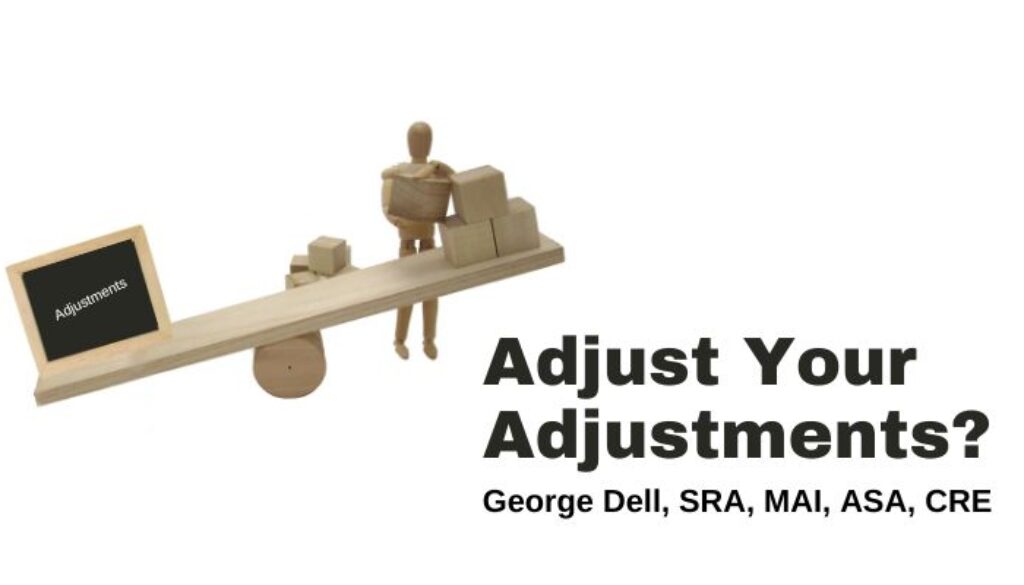Adjustments to comparables seem to be required by lender clients, the quasi-governmental GSEs, and some other users of appraisals.
But are they actually required? USPAP (Uniform Standards of Professional Appraisal Practice) says no. No. The word “adjustment” is nowhere to be found. (However Advisory Opinions say an adjustment should be “appropriate.”) Got it. Appropriate.
Adjustments are not relevant, but should be appropriate!
In appraiser license-qualifying education, two types of adjustments are noted: quantitative and qualitative.
Qualitative adjustments are those which cannot be calculated as a number. They can only be set up as “better,” “similar,” or “worse.” That’s how I was trained by a well-respected MAI. I was never taught in appraisal classes how to make adjustments to qualitative (ordinal) “elements of comparison.” Later, I applied some of my extreme econometric education to the problem of non-quant features.
I learned about non-parametric statistics, which is about ordinal/qualitative things. I was amazed how applicable this discipline, a part of statistics and used by economists, did at measuring and comparing-evaluating non-number things. They call this “non-parametric” because you could not calculate number parameters. You could only tell better/worse.
Like view amenity.
About this time, I also learned some welfare economics (well-being measures), and the connections between human behavior and economic responses to features. Like views.
I learned that humans are really good at telling better, worse, or “similar.” But humans are terrible at putting a mental yardstick to what they see.
This raised the question – how do we put a number to something as esoteric as “how good is my view?”
I dug into my difficult and endless non-parametric and statistical and econometric education. All taken after I had already been infected by “appraisal” mores, culture, groupthink, dogma, and the vague, even contradictory standards, education, and resultant subjective regulations. Opinion “rules” enforced by those who may have no comprehension of and no interest in such topics.
Yet some things can be measured and well-understood. To this end we have discovered there are only three fundamental types of “support” for your believable (credible) opinion: association, contrasting, and sequencing. We use these words for their generality.
- Association is usually a simple regression, over a given measure, like the passage of time;
- Contrasting is like “grouped pair comparison,” defined by the five dimensions of similarity;
- Sequencing applies non-parametric methods, qualitative analysis, with computer algorithms.
Ironically, those of us who have adopted modern analytic (data science) methods, find that adjustments become almost unnecessary. With one exception, not really an adjustment. It is the market conditions (time) “adjustment.” The data science precept is that the science of data is “80% get the data right.” The rest will follow.
The simplest time adjustment is similar to the living area adjustment. One is $/SF, the other is $/day. Simple. Calculated with a graph in less than ten seconds, once the right data is in. Non-linearities are easily found and dealt with by a trained analyst/appraiser.
